Theory and Critical contexts.
This section includes links to essays I have written on academic discourse, photographs of my research methods in my sketchbook that related both to my theoretical and practical research interests and commentary on critical contexts in relation to my practice.


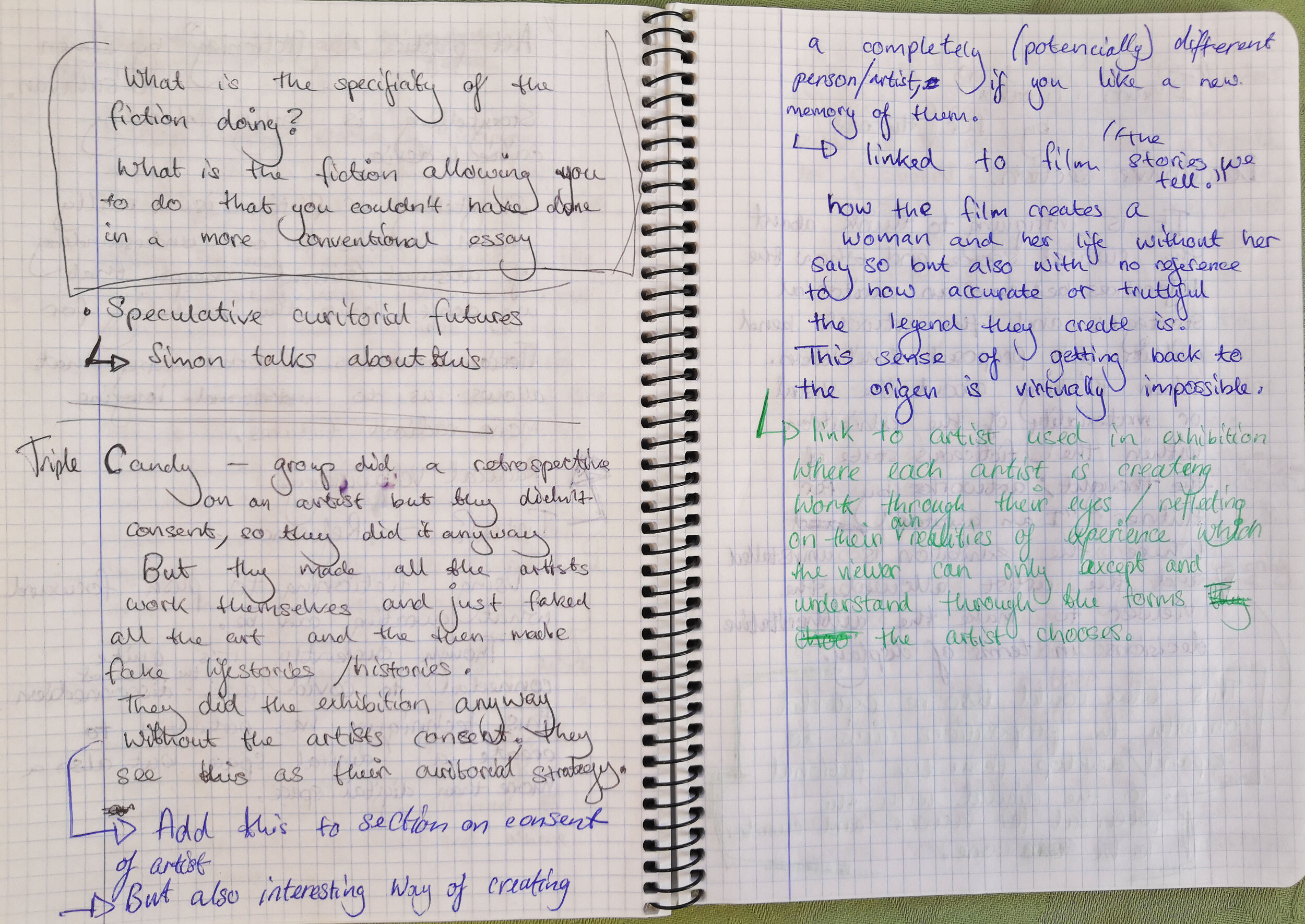






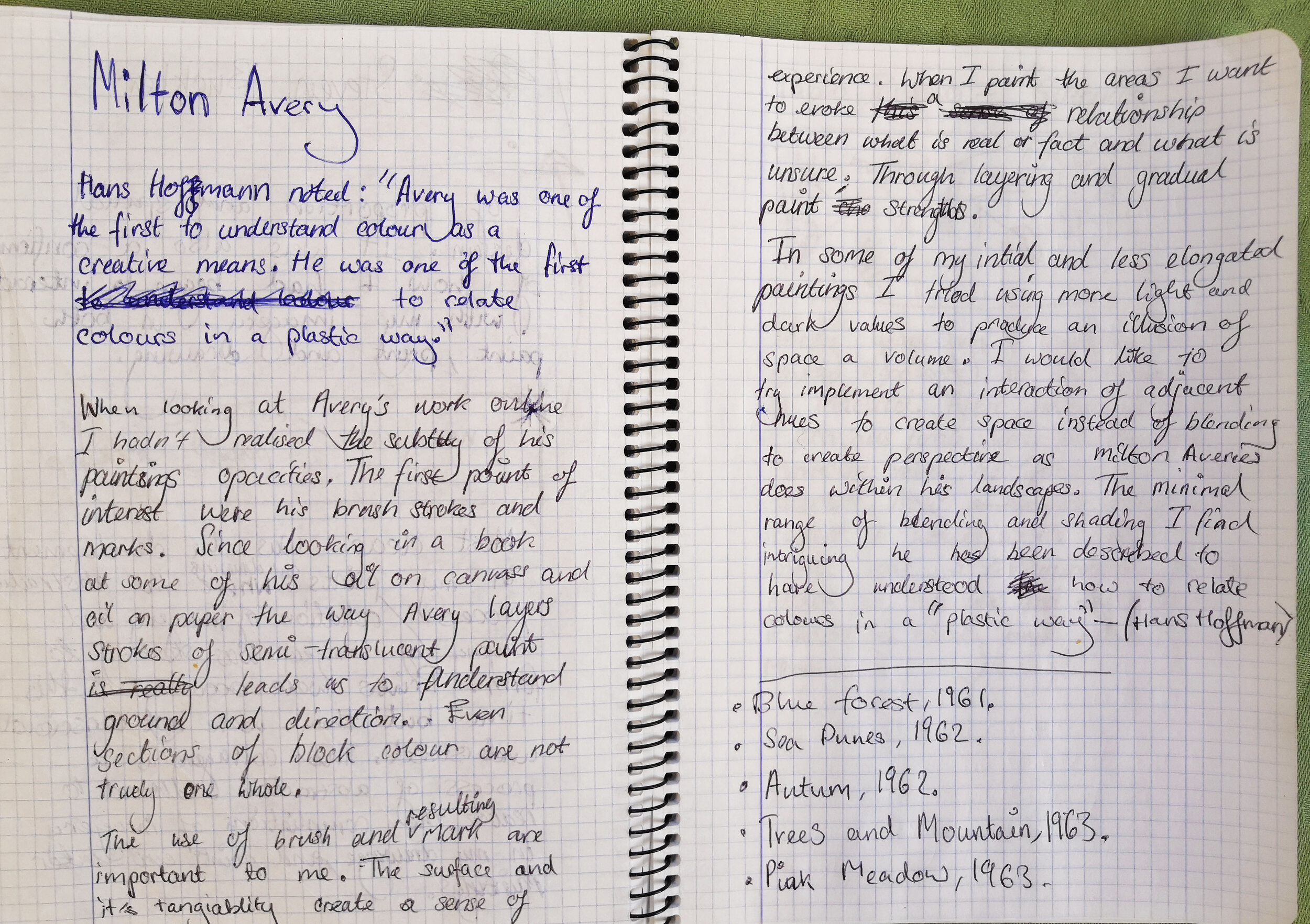



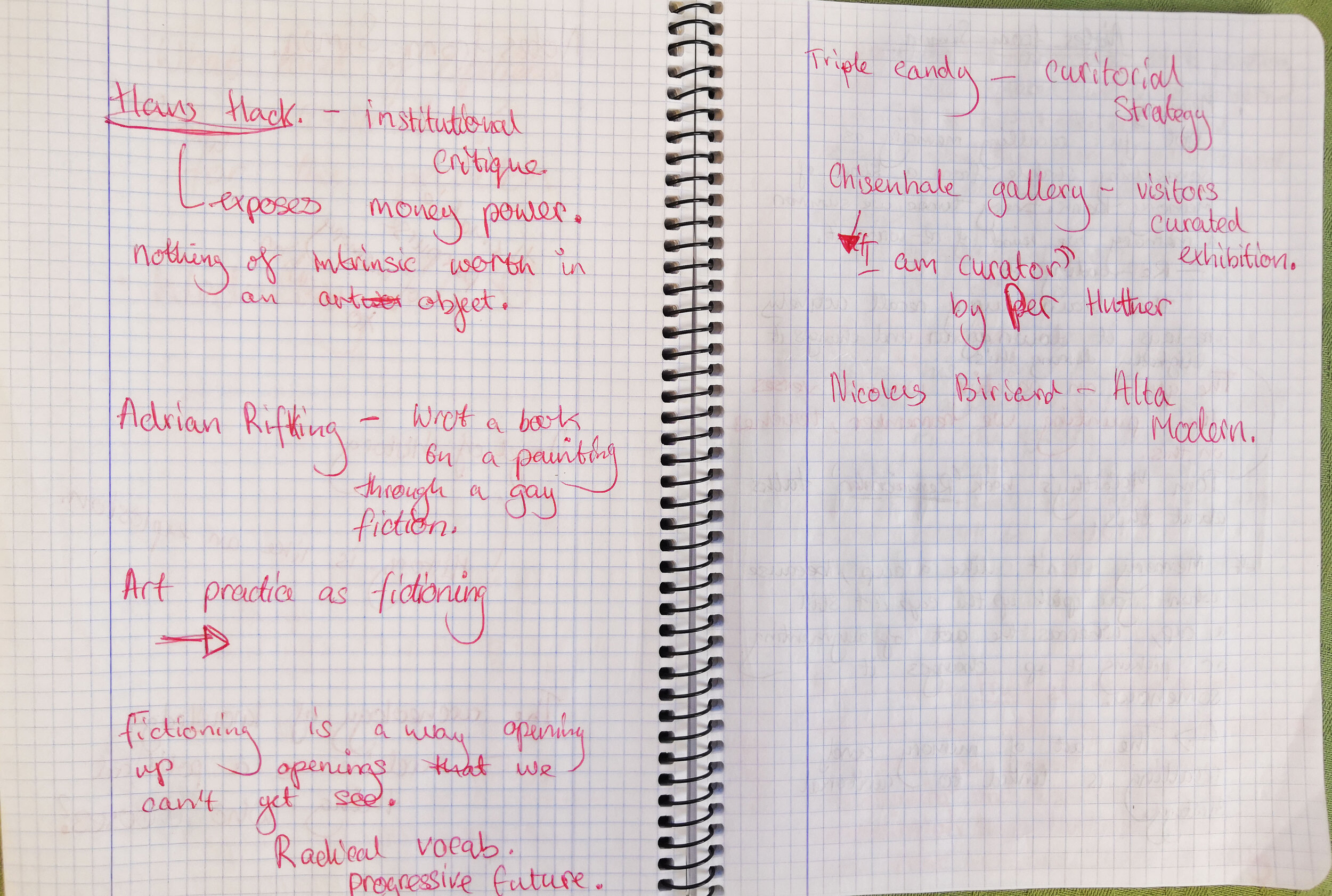

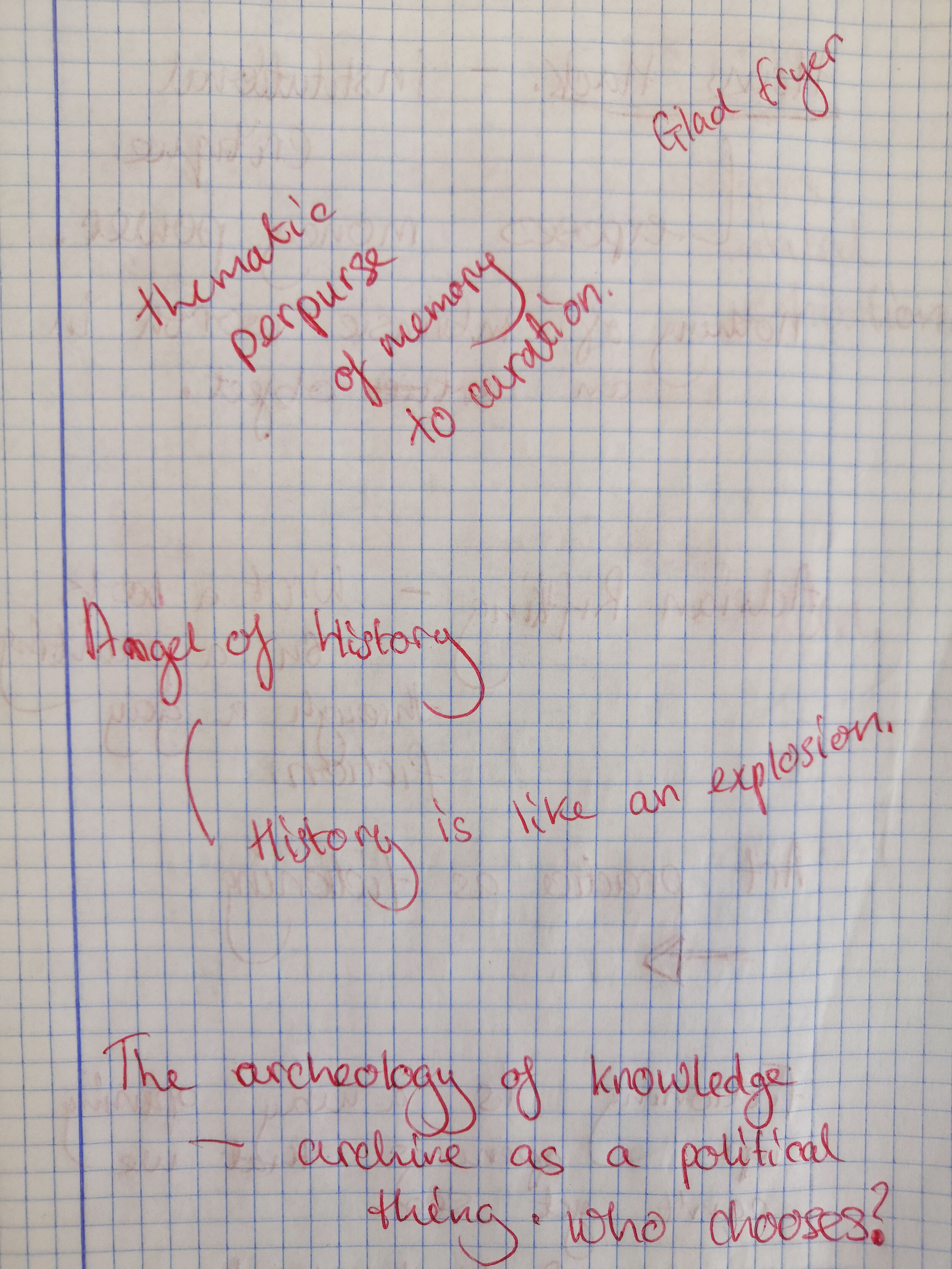


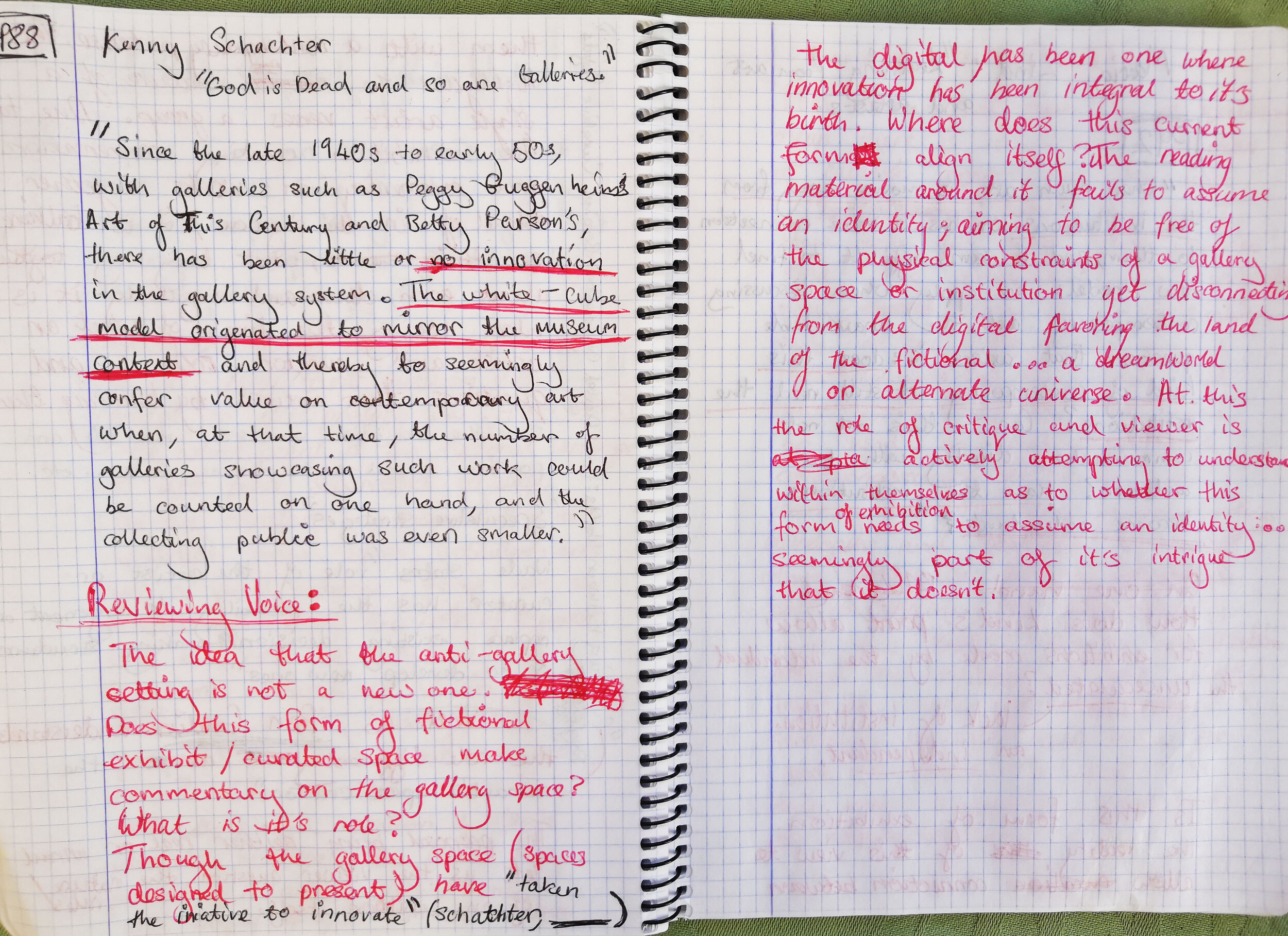
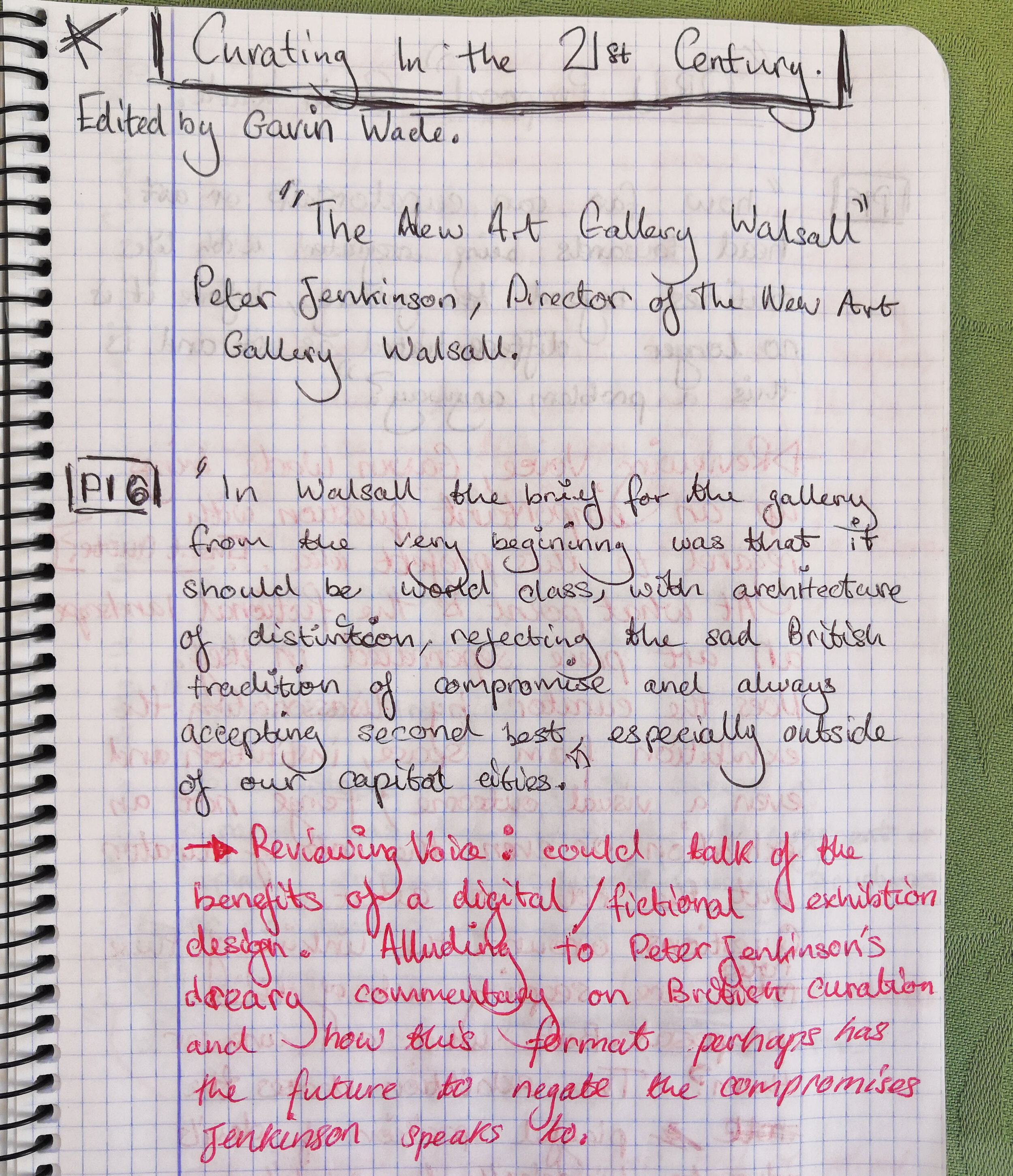

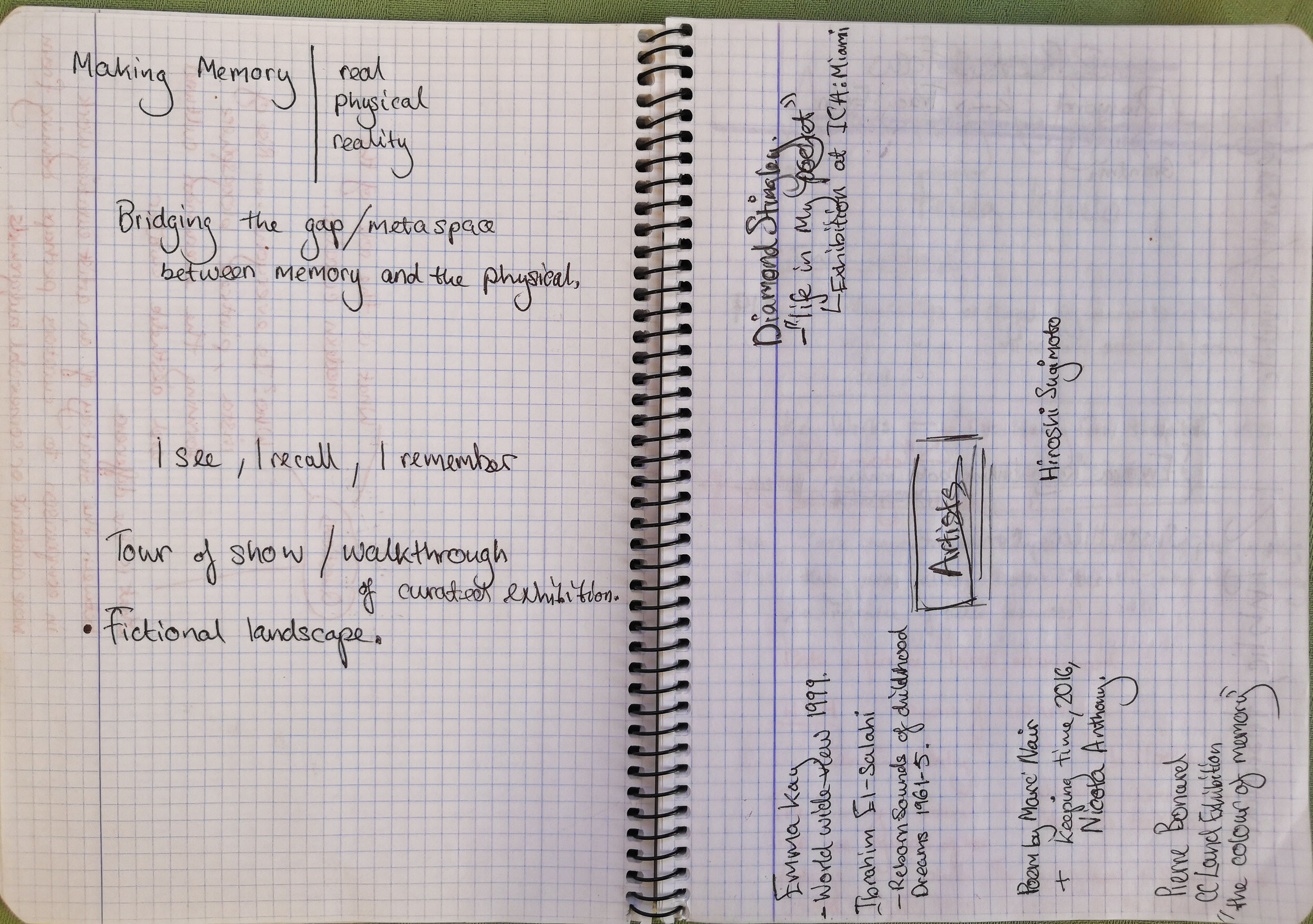
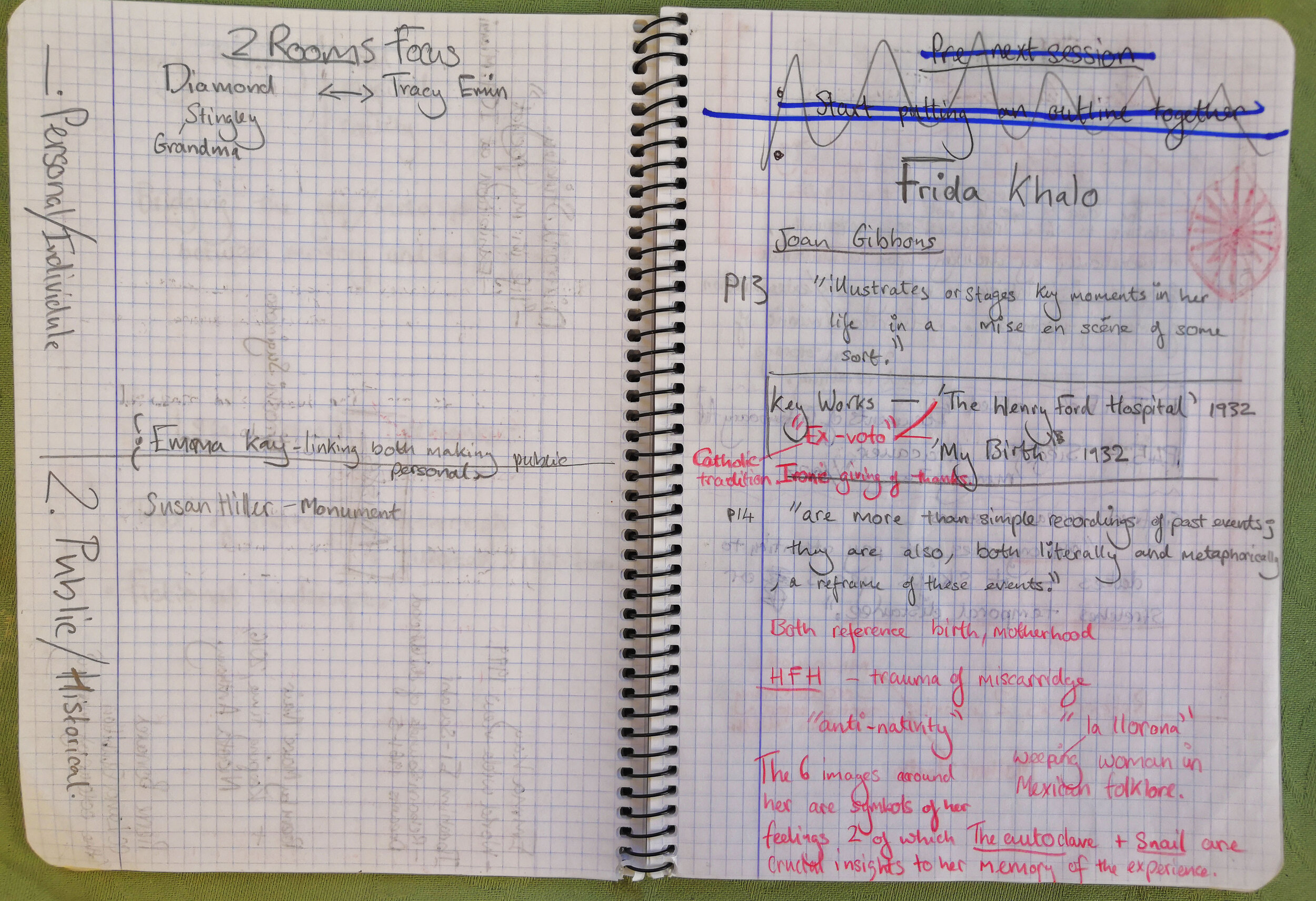





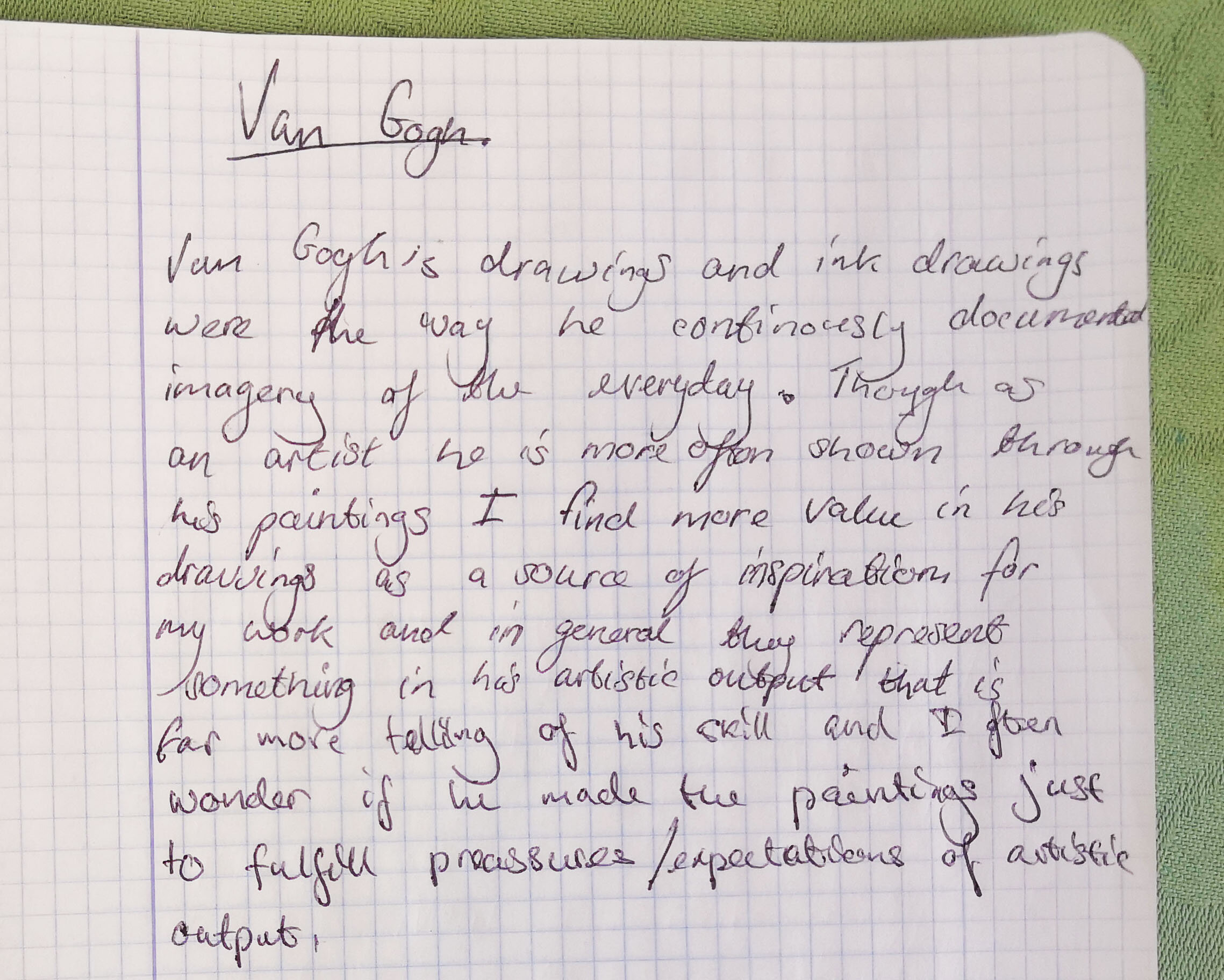
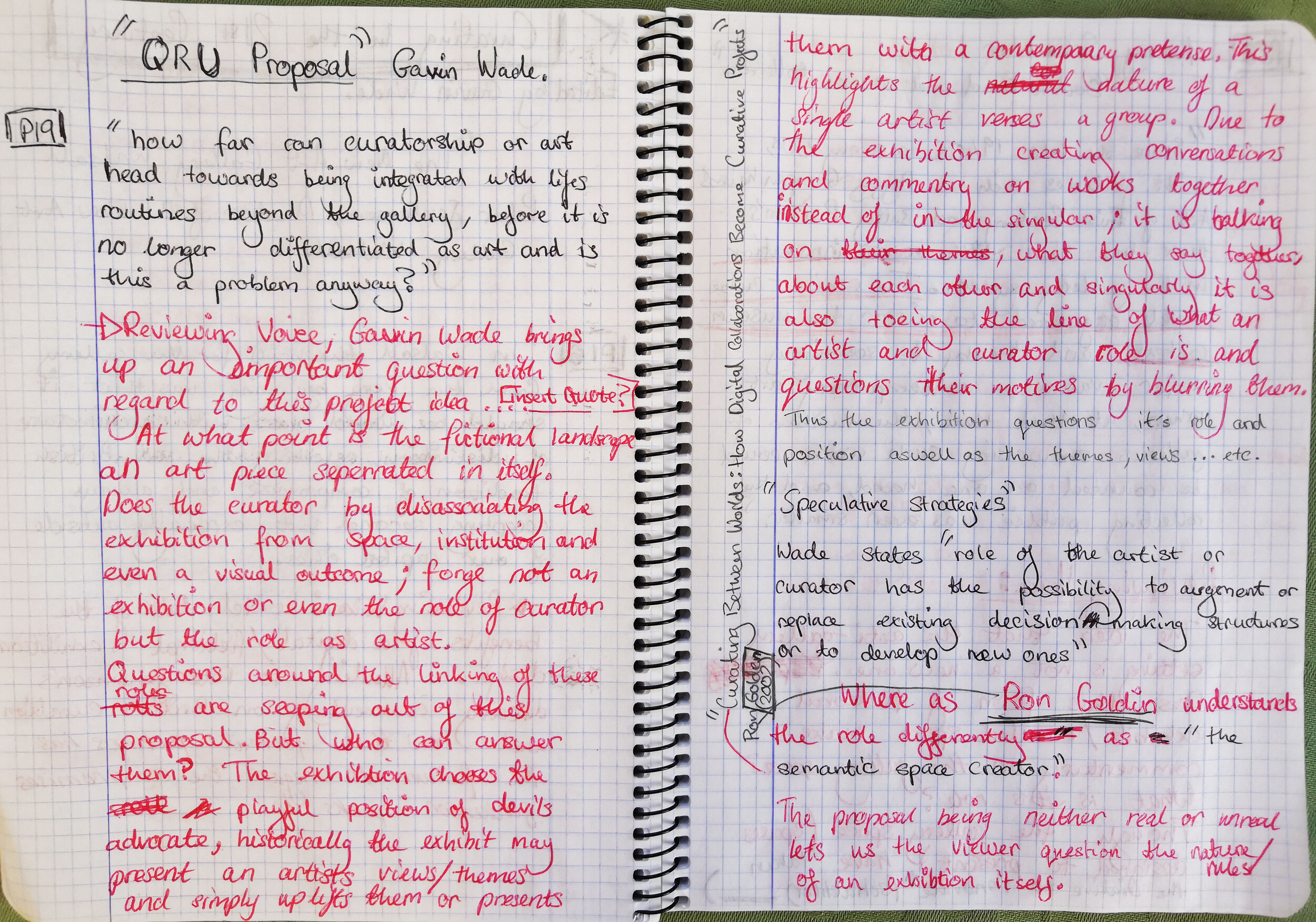
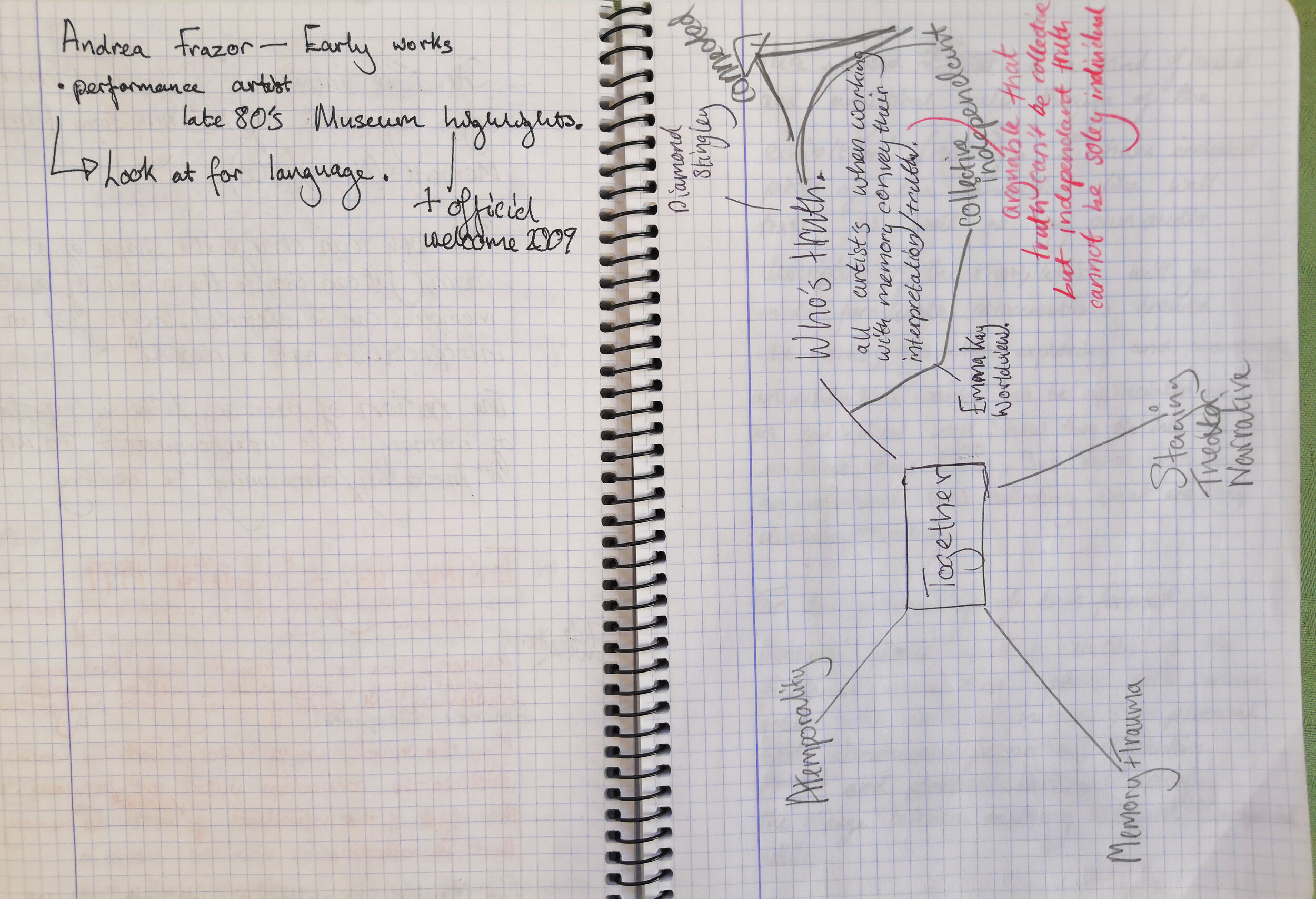




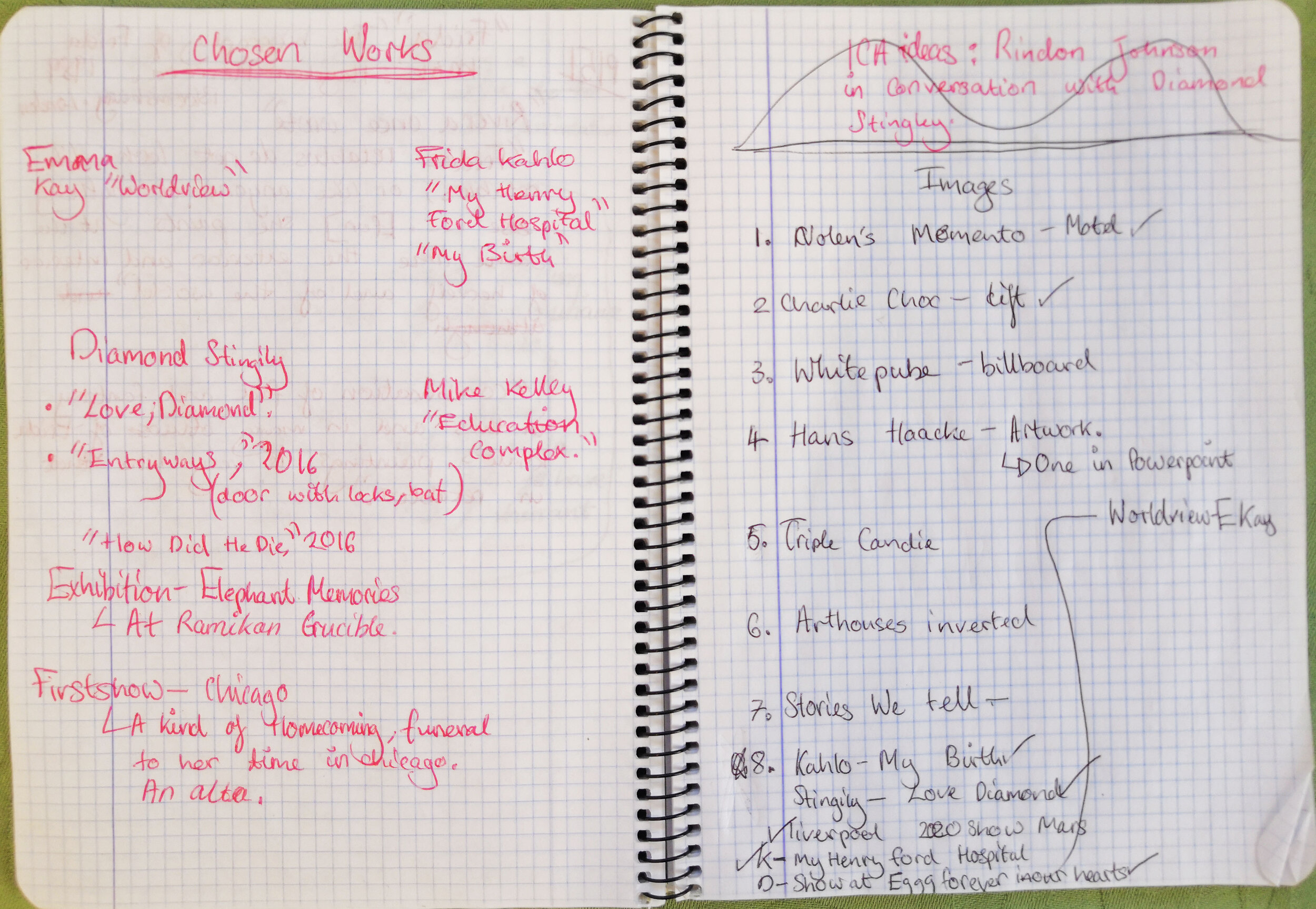






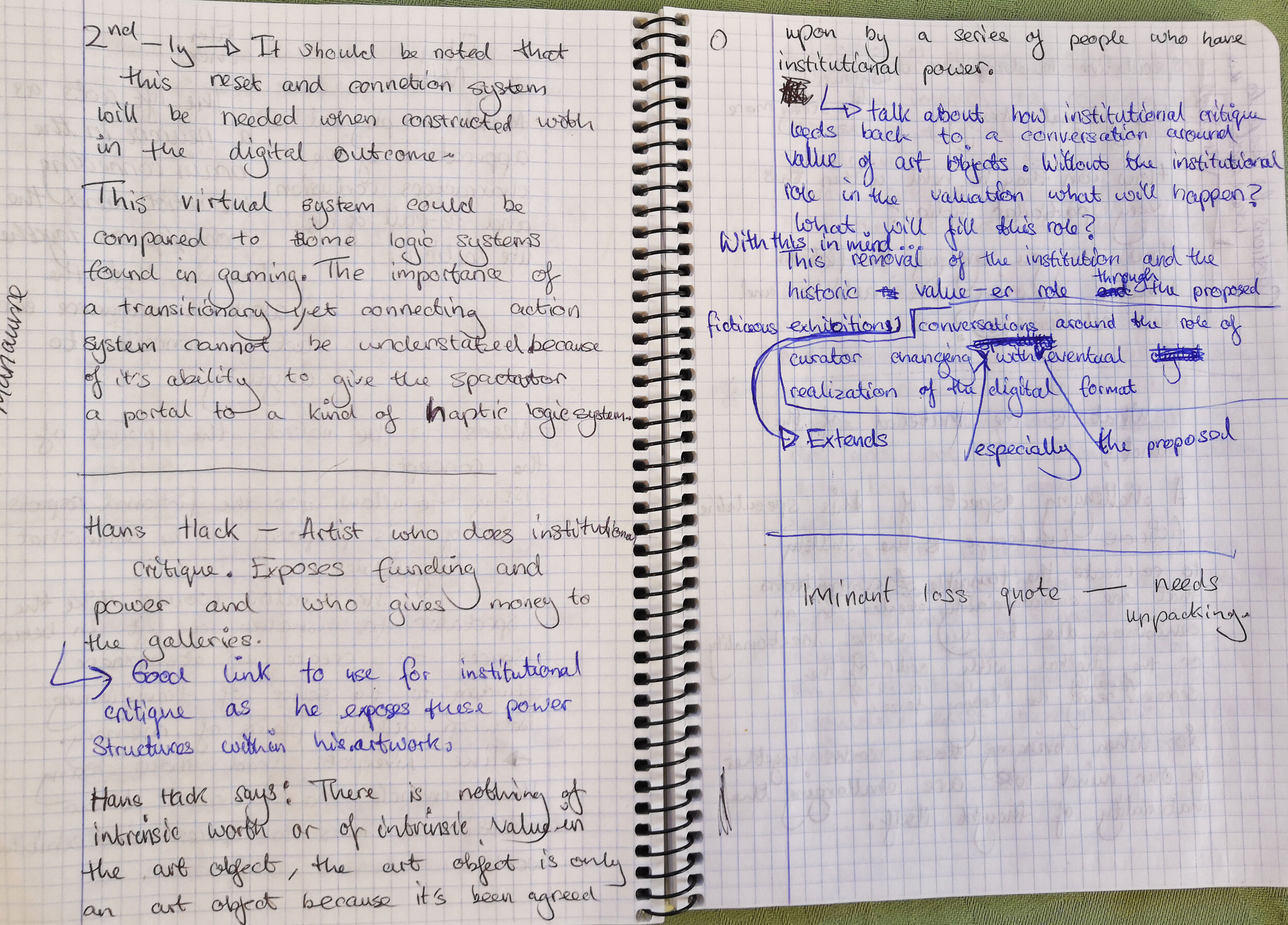


Dissertation.
I see I feel I remember is the title of my dissertation in which I explore conversations around a fictional exhibition that has been designed and reviewed by me acting as the curator and reviewer in a kind of fictional critical walk through. The exhibitions focus was around artists explore personal memory and communal memory I think the title of the exhibition is a process or phrasing that defines my work to some extent but perhaps with a change of tense to I have seen, I have felt, I have remembered. For the purpose of its assessed format, a focus will be placed upon a selection of the works within the show, using fabricated exhibition information and internal conversations and communal conversations around the works to verbally converge the experience and understanding of the exhibition.
My dissertation has been an enormous influence and passion project of mine as I hope to transfer it from the literary to the visual in the future
Practical and aesthetic research.
Often during feedback or casual conversations with strangers I often receive a whole host of varying artist links and comparisons, some of them are great some of them are not but they are always welcome.
Much like memory the format, technique or material an artist chooses to represent the visual outcomes through can change dramatically the interpretation of the artist pursuits for the viewer.
In Nolan’s film ‘Memento’ the character Lenny alludes to the unreliability of memory due to interpretation. “Memory can change the shape of a room, it can change the colour of a car, memories can be distorted. They’re just an interpretation not a record.” (Nolan, 2000)
I mention Nolan’s film ‘Memento’ as as I often find that delving too deeply into research around suggested artists for their aesthetic's, materials and general visuals can be the wrong start to a project. I prefer to look into the aesthetic's and techniques of an artist during the middle or towards the end of the project instead of from the gate. This means that I look at them for what they can add to my work instead of for how they can direct my work, particularly if there is a suggestion of some kind of style or technical mandate which can hinder your personal development of both your work and as an artist.
Practical and aesthetic research.
Often during feedback or casual conversations with strangers I often receive a whole host of varying artist links and comparisons, some of them are great some of them are not but they are always welcome.
Much like memory the format, technique or material an artist chooses to represent the visual outcomes through can change dramatically the interpretation of the artist pursuits for the viewer.
In Nolan’s film ‘Memento’ the character Lenny alludes to the unreliability of memory due to interpretation. “Memory can change the shape of a room, it can change the colour of a car, memories can be distorted. They’re just an interpretation not a record.” (Nolan, 2000)
I mention Nolan’s film ‘Memento’ as as I often find that delving too deeply into research around suggested artists for their aesthetic's, materials and general visuals can be the wrong start to a project. I prefer to look into the aesthetic's and techniques of an artist during the middle or towards the end of the project instead of from the gate. This means that I look at them for what they can add to my work instead of for how they can direct my work, particularly if there is a suggestion of some kind of style or technical mandate which can hinder your personal development of both your work and as an artist.
SUBCONSCIOuS and subtle inspiration.
The stop motion picture, animation, photographs and panoramas, Guernica by Pablo Picasso has been have been a consistent source of influence on my work. Guernica a painting by Picasso is a muse that I've re-visited many times. When I was younger I wrote about Guernica by Picasso I think I found it difficult to read because of the placement and layering of different experiences and moments all into one creating a chaotic visual. But now when sketching fragments of scenery I find myself thinking back to Picassos work, especially the space found in within the work as it's quite difficult to get the right balance. Within the painting Picasso uses a lot of symbolic language that is specific to Spanish culture, politics and history. My previous essay around Guernica focused on discussing its value as a political piece against a war.
“A spontaneous fusing of myth and fact, dream and vigil, reason and fantasy.”
Sarah M. Lowe:“This is Kahlos brand of surrealism a capacity to envoke a whole universe out of bits and fragments of her own self and out of the persistent traditions of her own culture.”
The book by Sarah McLeod speaks to Karlos diary in the intro we see colours from Tesco express a view of her employment with the Latin cultural language both visual and literal. Directing us to understand her works to be an embodiment of a cultural history through her interiors perspective. The book highlights the pain she authors within her works and and the authenticity of the experience she creates due to it being visual and language-based.
Kahlo’s work both in her diary her paintings and her drawings and her photography are an embodiment of her and convey notions of the diaristic to work can be seen as realism through the filter of abstraction or surrealism. Often Frida Kahlo's contributions to a number of genres such as memory work, the autobiographical, surrealism, realism and many others seem undervalued or overlooked unlike her male equivalents, Lowe in her book compares Kahlo’s expression of the psyche to that of Rembrandt and Van Gogh and points out the injustice of these males reputations versus that of Frida, the woman.



